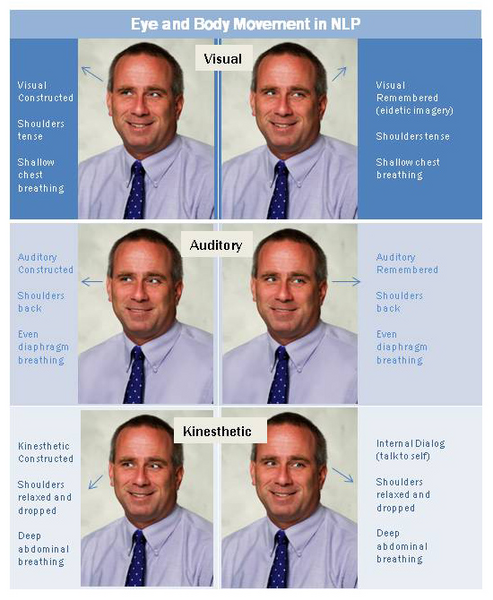ATD Blog
Stop the Brain Teasers and Start the Brain Challengers
Thu Apr 04 2013


Many say that the brain is like a muscle; you have to train it. Indeed, it is vital to use your brain’s existing neuron networks. If you don’t, then your brain will shut them down. Therefore your total mind power declines. Brain teasers and brain games are not only entertaining, but people can use them to build brain “muscle.”
Each type of brain teaser or game is intended to improve a specific area in the brain, such as frontal, parietal, and temporal lobes, all of which are related to different mental tasks. Improving these areas of the brain will result in better and faster thinking for the learner. Here are some tips on how to maximize the results of brain teasers, ice-breakers, and training activities.
Who Doesn't Like to Play?
Since childhood our natural instinct is to play games and have fun. Adult learners tend to be a competitive bunch —they enjoy winning and seeing positive end results. Oftentimes, they are mesmerized when they reach a solution and realize it was in front of their eyes all the time. By applying neurolinguistics principles when delivering brain teasers, trainers and professional educators can maximizing the learner’s response and enhance engagement and participation in the classroom.
These techniques can be used in nearly any aspect of learning and teaching, including self-management, presentation skills, use of language for precise communication, study skills, classroom management, teaching design, and so on. Such principles assume that all educators influence learners’ responses through their use of space, language, and so on, regardless of whether they are using neurolinguistic programming (NLP). Indeed, many will do so without being aware of it, and may unintentionally use space in ways that negate rather than support educational objectives.
Know Your Audience
NLP makes the assumption that the learners’ experiences are a result of what they see, hear, feel, smell, touch, and taste. NLP suggests that people develop a favorite representational system, which is predominantly visual (seeing), auditory (hearing), or kinesthetic, also called “VAK.”
A trainer or facilitator can easily detect their audiences’ representational system preference by examining which representation systems someone is using. Paying attention to eye movement gives you clues as to whether a person is thinking in terms of images, sounds, or feelings and movements. Paying attention to the cues gives you more nonverbal information about people.
With that in mind, a trainer will be able to choose what games, activities, ice breakers, or brain teasers would be more appropriate to a specific audience. This will empower them to modify the pace and format of some activities based on main representational system preference of the audience.
Below is a quick guide to identifying such cues.
Mini Achievements Lead to the Big Prize
Sometimes the biggest obstacle to learning is that the amount or scope of material is overwhelming to the learner. Knowing how to “chunk” material into more manageable sizes makes the task more achievable for learners. Allowing learners to accomplish many small achievements builds confidence and may encourage participation and greater success during more complex and meaningful activities. If using a big activity with a lot of bells and whistles to help the learners understand training content, make sure you help them become champions during the activity.
There Are No Failures or Losers
Brain teasers during ice breakers, games, or interactivities will be the best time to build rapport with learners. Some learners will be less successful than others. That will be your chance to identify what is not working and to offer feedback that will help learners perform better later. Indeed, any failure should be seen as a feedback opportunity for future success. Activities designed for a specific learning solution will be an excellent “fishbowl” opportunity to the trainer. You can observe and get to know your audience and identify the positive intentions in your students' behavior. Even when behavior is poor, remember the positive intentions— they create positive choices.
Takeaways
All your actions as an instructor speak loudly to your audience. Tactical communication is necessary for ultimate success. While ice breakers and games can be fun and educational, they also should be used as strategic time to be able to practice some NLP principles:
Identify your audience preferences.
Examine your audience to customize training content and activity delivery.
Enhance audience engagement and confidence by allowing them to achieve several goals during the learning process.
Build rapport and with your audience and find chances to give them feedback, explaining that there is no failure, only a chance for personal improvement.
References
Bandler, R. & Andreas, S. Using your Brain for a Change. Moab, Utah: Real People Press, 1985
Bandler, R. & Grinder, J. The Structure of Magic: a book about language and therapy. Palo Alto: Science and Behavioural Books, 1975
Bateson, G. Steps to an Ecology of Mind: Collected Essays in Anthropology, Psychiatry, Evolution and Epistemology, Revised ed. Chicago: University of Chicago Press, 2000
Bostic St.Clair, C. & Grinder, J. Whispering in the Wind. Scotts Valley, CA: J & C Enterprises, 2001
Churches, R. & Terry, R. NLP for Teachers. Carmarthen, UK: Crown House, 2007
Dilts, R., Bandler, R., & DeLozier, J. Neuro-linguistic programming: volume 1, the study of the structure of subjective experience. Soquel, CA: Meta Publications, 1980
Henwood, S. & Lister, J. NLP and Coaching for Healthcare Professionals. Chichester, UK: John Wiley & Sons, 2007
Tosey, P. & Mathison, J. (2003). "Neuro-linguistic Programming and Learning Theory: a response," The Curriculum Journal. 14, 361-378
Tosey, P. & Mathison, J. (2008). "Neuro-Linguistic Programming as an Innovation in Education and Teaching", Innovations in Education and Teaching International. 47. 317-326
Vermersch, P. (2004). "Prendre en compte la phénomenalité: propositions pour une psychophenomenologie", Expliciter. 57, 35-46
